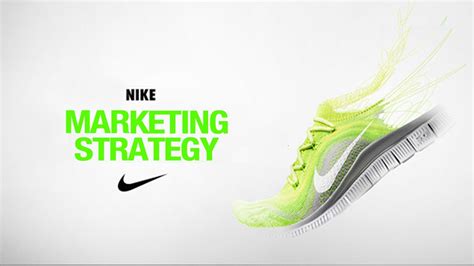nike doelgroep | nike campaign strategy nike doelgroep Nike has a mass-market business model which caters to sports enthusiasts. The product categories are broadly shoes, sports apparel, and accessories. Their first products were running shoes, given that Phil Knight was a runner himself. Šeit ir bijuši 67. https://www.e-klase.lv
0 · nike sports marketing strategy
1 · nike sports brand strategy
2 · nike shoe sales strategy
3 · nike innovation strategy
4 · nike global marketing strategy
5 · nike digital marketing strategy
6 · nike campaign strategy
7 · nike athletic strategy
Rīgas radio. Interneta radio. Vislatvijas radio. Reģionālais radio. Baltijas radio. Ukrainas radio. Radio reitingi. Online TV.

This article will explore Nike’s target market, examining the demographics, psychographics, and lifestyle choices that shape its audience. From casual enthusiasts to professional athletes, Nike caters to diverse consumers with varying needs and aspirations. The Nike target audience tends to be from the higher-income socio-economic group, reflected in the premium brand image and pricing of Nike products. The average Nike customer is a sports enthusiast, interested in leading an active and healthy lifestyle. First and foremost, Nike operates through direct-to-consumer channels, including its retail stores, Nike.com, and mobile applications. These direct channels give Nike complete control over the customer experience, product assortment, and pricing.
Nike’s digital marketing and social media strategy is a cornerstone of its overall marketing approach, showcasing a masterful blend of innovation and engagement. The brand has adeptly navigated the digital landscape, leveraging various online platforms to strengthen its connection with consumers. Nike has a mass-market business model which caters to sports enthusiasts. The product categories are broadly shoes, sports apparel, and accessories. Their first products were running shoes, given that Phil Knight was a runner himself. Nike, a global leader in the athletic footwear and apparel industry, has established itself as a powerhouse brand renowned for its innovation, quality, and iconic designs. In this section, we will provide an introduction to Nike and explore its mission and approach. Nike’s marketing strategy has played a pivotal role in its remarkable growth and market reach. The brand’s commitment to excellence, innovation, and customer-centricity has propelled it to a dominant position in the global sportswear and apparel industry.
Nike dominates the U.S. sneakers market, boasting an impressive brand awareness of 97 percent. The majority of consumers are not only familiar with the brand but are also owners of Nike sneakers.
nike sports marketing strategy
Nike’s target audience spans across athletic enthusiasts seeking peak performance, fashion-forward individuals embracing athleisure, empowered youth valuing authenticity, and even professional athletes and teams in pursuit of unparalleled excellence.Nike’s target customers are typically those who are active and passionate about sports and fitness. They are typically young adults and teens who are looking for high-quality, stylish and performance-driven products. This article will explore Nike’s target market, examining the demographics, psychographics, and lifestyle choices that shape its audience. From casual enthusiasts to professional athletes, Nike caters to diverse consumers with varying needs and aspirations. The Nike target audience tends to be from the higher-income socio-economic group, reflected in the premium brand image and pricing of Nike products. The average Nike customer is a sports enthusiast, interested in leading an active and healthy lifestyle.
First and foremost, Nike operates through direct-to-consumer channels, including its retail stores, Nike.com, and mobile applications. These direct channels give Nike complete control over the customer experience, product assortment, and pricing.
nike sports brand strategy
Nike’s digital marketing and social media strategy is a cornerstone of its overall marketing approach, showcasing a masterful blend of innovation and engagement. The brand has adeptly navigated the digital landscape, leveraging various online platforms to strengthen its connection with consumers. Nike has a mass-market business model which caters to sports enthusiasts. The product categories are broadly shoes, sports apparel, and accessories. Their first products were running shoes, given that Phil Knight was a runner himself.
Nike, a global leader in the athletic footwear and apparel industry, has established itself as a powerhouse brand renowned for its innovation, quality, and iconic designs. In this section, we will provide an introduction to Nike and explore its mission and approach.
Nike’s marketing strategy has played a pivotal role in its remarkable growth and market reach. The brand’s commitment to excellence, innovation, and customer-centricity has propelled it to a dominant position in the global sportswear and apparel industry. Nike dominates the U.S. sneakers market, boasting an impressive brand awareness of 97 percent. The majority of consumers are not only familiar with the brand but are also owners of Nike sneakers.
Nike’s target audience spans across athletic enthusiasts seeking peak performance, fashion-forward individuals embracing athleisure, empowered youth valuing authenticity, and even professional athletes and teams in pursuit of unparalleled excellence.
fendi pequin striped shoulder tote bag
fendi mania off the shoulder

nike shoe sales strategy
TSI Partners. Transport and Telecommunication Institute is the largest university-type accredited non-state technical higher educational and scientific establishment in Riga, the capital of Latvia. It was established in 1999, although it also incorporates the core of a technical and aviation school which dates back to 1919.
nike doelgroep|nike campaign strategy



























